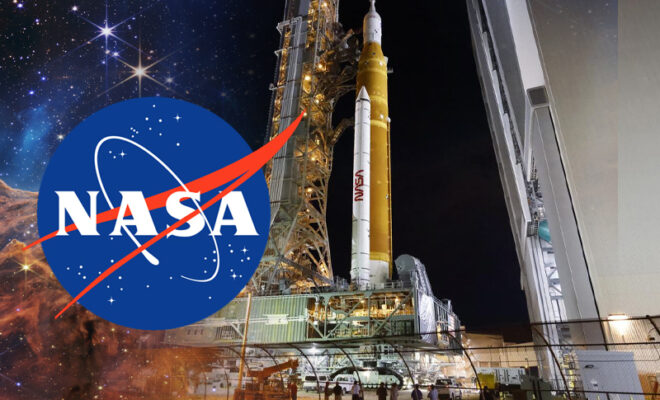NASA To Relaunch Moon Rocket Artemis I, After 2 Failed Attempts

NASA’s moon rocket launch project failed twice because of fuel leaking issues. NASA will try to launch its moon rocket ‘Artemis I’ again on 14th November.
According to sources, NASA’s Artemis I gigantic moon rocket is again on the launching pad on Friday (local time) in preparation for the third launch attempt after undergoing various repairs amid complaints of fuel leakage.
The space agency is preparing for a second attempt to launch the Artemis I mission. On November 14, a 69-minute timeframe that begins at 12:07 a.m. ET for the unmanned test mission opens.
According to CNN, the launch will be streamed live on the NASA website. The rocket has been sidelined since August due to fuel leakage.
After problems with fuel leaks prevented the first 2 launch attempts, the rocket was packed away for weeks.
Then, as Hurricane Ian passed through Florida, the rocket was forced to leave the launchpad and go for safety.
Late on Thursday night, the Space Launch System rocket started its hours-long journey of 4 miles (6.4 kilometers) from its indoor protection to Pad 39B at NASA’s Kennedy Space Center in Florida. According to CNN, it took over 9 hours to reach its objective.
However, authorities felt confident enough to proceed with the deployment, as per Jim Free, associate administrator for NASA’s Exploration Systems Development Mission Directorate.
The Artemis team is once again keeping an eye on a storm that may be headed for Florida.
According to meteorologist Mark Burger, the US Air Force’s launch weather officer at Cape Canaveral, the unidentified storm might form near Puerto Rico over the weekends and gradually move northwest early next week.
The biggest step NASA will take to return astronauts to the moon by 2025 is this one.
The last time the space agency sent a person to the moon was with Apollo 17 in December 1972, which will soon be 50 years old.
Other moon missions are anticipated to be made possible by the Artemis I mission.
The Orion capsule, which sits atop the rocket during blastoff and is intended to transport people, will detach when it enters space after takeoff.
For this mission, it will be flying empty save for a few mannequins. According to CNN, the Orion spacecraft will spend a few days maneuvering toward the moon before joining its orbit and starting the journey back to Earth days later.
The Orion spacecraft is scheduled to splashdown in the Pacific Ocean outside San Diego on December 9. The mission is anticipated to last 25 days overall.
To verify that both the SLS rocket & Orion capsule are prepared to house astronauts, the mission’s purpose is to collect data and test the hardware, navigation, and other systems.
By the end of this decade, the Artemis program hopes to send a woman and a person of color to the moon.
The Artemis II mission, scheduled for 2024, is anticipated to fly in a manner similar to that around the moon and will include a crew.
And in 2025, Artemis III is anticipated to perform the first lunar landing of astronauts since NASA’s Apollo program.



